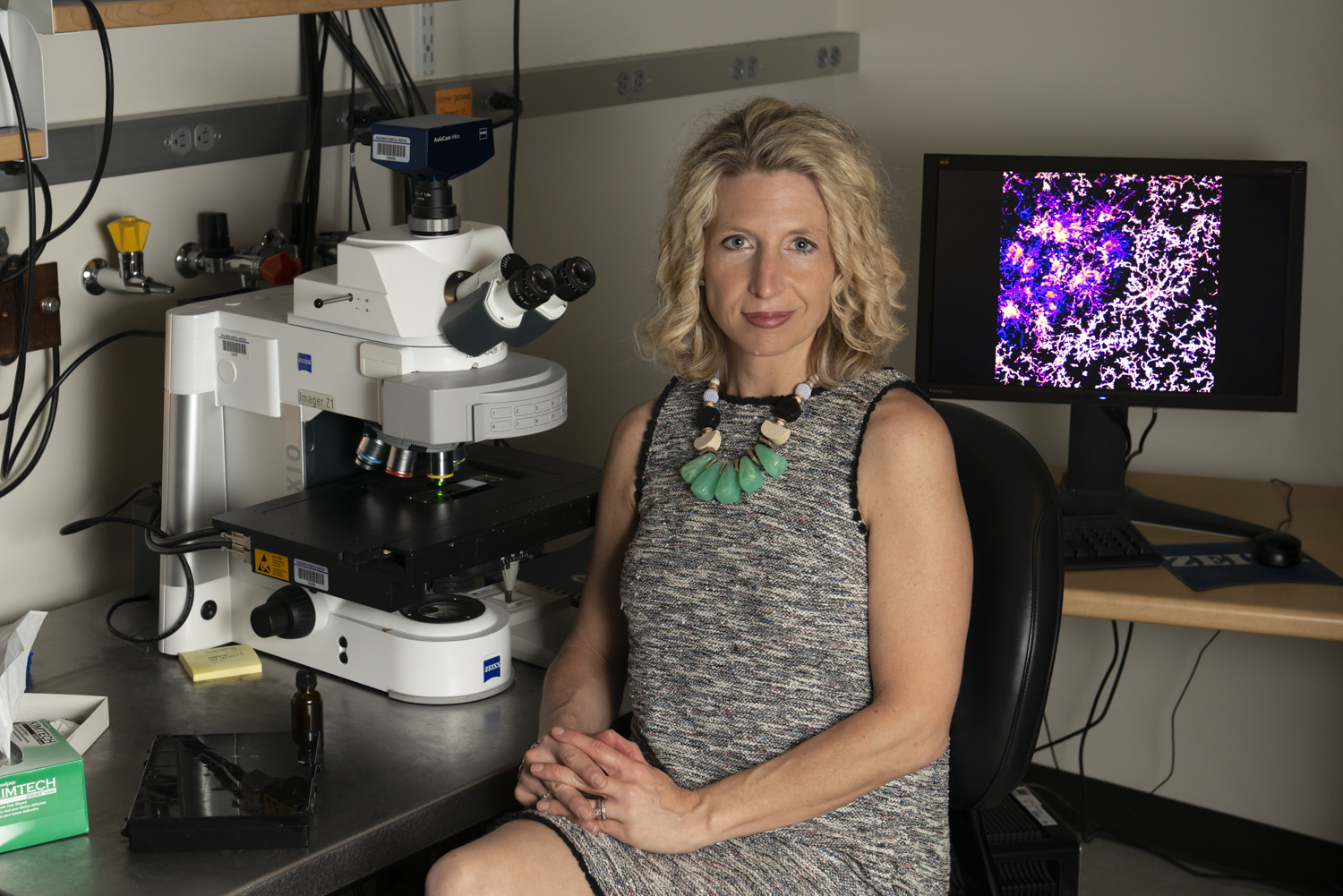Associate Professor of Neurology, F.M. Kirby Neurobiology Center, Boston Children's Hospital

Microglia are the macrophages of the brain, but unlike macrophages, we don’t know much about what triggers microglia to do their job – clear waste, eliminate synapses, or remodel myelin. We know that genetics plays a role – almost half of the risk genes for late onset Alzheimer’s disease are enriched in microglia, and many risk genes for other diseases such as schizophrenia, Parkinson’s disease, and ALS also are expressed in microglia – but how those genes alter microglia functionality is unclear.
My laboratory seeks to understand how microglia genetics and brain environment interactions drive microglia function across the lifespan. We explore how neuron-glia communication facilitates the formation, elimination and plasticity of synapses in development, how genetic programs regulate microglia and macrophage function in development and disease, and how signaling between microglia and immune cells in the periphery and brain borders regulate waste clearance. In each case, a major goal is to understand how microglia function is driven by genetic programs and the material environment that microglia encounter, including synapses, myelin, and protein aggregates.
To study this, we use a variety of models, from studying human tissue samples, including brain, cerebrospinal fluid, and blood, to using human iPSC models in vitro, to more classic mouse models, and even xenograft models that allow us to engraft human iPSCs into mouse brain. These approaches allow us to interrogate microglia function in a way that is comparable to human development, homeostasis and disease.
